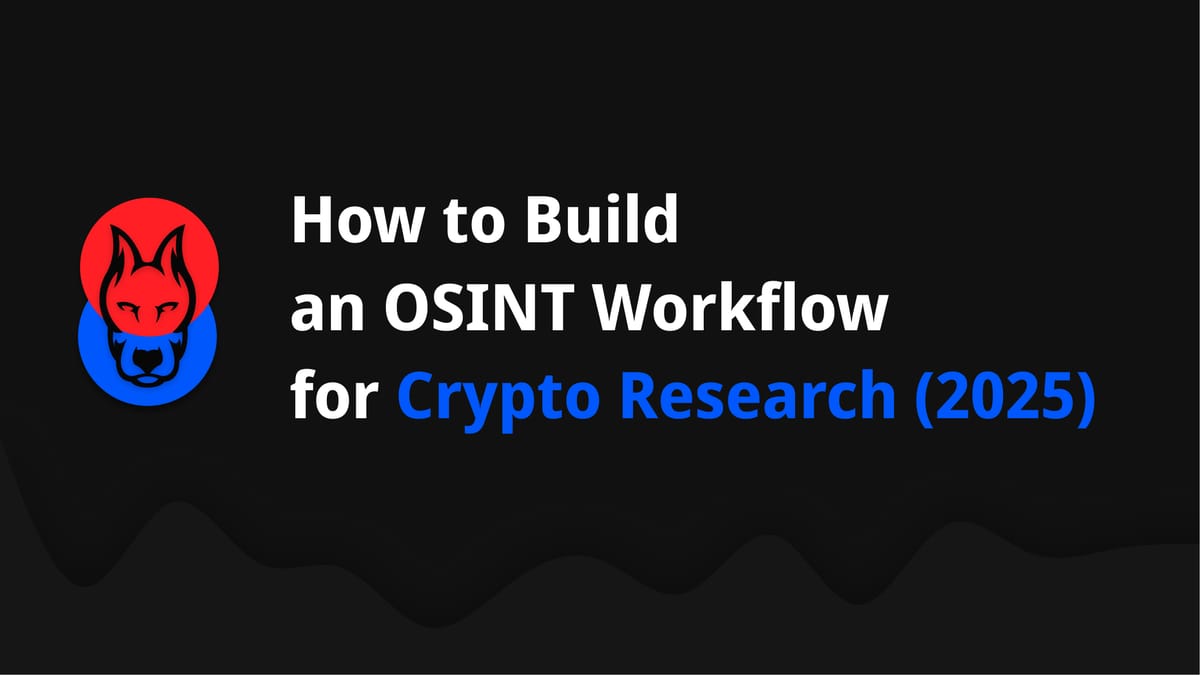How to Build an OSINT Workflow for Crypto Research (2025)

Open Source Intelligence (OSINT) has become a core weapon for crypto analysts, traders, and institutional desks. In a market where flows move before prices, the ability to collect, filter, and act on information faster than competitors defines your edge.
This guide explains how to set up a working OSINT pipeline for crypto research in 2025 — using free and paid tools, automation, and structured workflows.
Why OSINT Matters in Crypto
The crypto market is noisy. Billions of data points are generated daily across blockchains, exchanges, media, Telegram, X (Twitter), and institutional reports. Without a system, you drown in information.
An OSINT workflow helps you:
- Collect structured and unstructured data from multiple sources.
- Filter noise using automation and relevance scoring.
- Analyze flows, signals, and correlations.
- Act before the market reacts — turning data into alpha.
Step 1: Build Your Feed Layer
Your workflow starts with data ingestion.
Recommended tools in 2025:
- Inoreader / RSS – aggregate crypto news, ETF flow trackers, DeFi dashboards, on-chain feeds.
- SoSoValue, Farside, CoinMetrics – ETF flows, stablecoin supply, network stats.
- Arkham, Nansen, Glassnode – smart money monitoring, exchange flows, wallet clustering.
Pro tip: tag feeds by category (ETF, Stablecoins, L2, Derivatives) → easier to filter later.
Step 2: Automate Processing
Manual reading = wasted time. Automate:
- Make.com – route RSS or API data into workflows.
- GPT-5 summaries – generate 3–5 bullet takeaways per feed item.
- Alerts – send distilled info to Telegram or Slack.
Example:
ETF flow alert → GPT-5 summary → push to Telegram channel in under 60 seconds.
Step 3: Store & Organize
Don’t lose insights. Create a structured repo:
- Notion – qualitative signals, screenshots, narrative analysis.
- Airtable – structured DB (flows, metrics, backtests).
- Google Sheets – quick dashboards for correlations (ETH/BTC vs ETF flows).
This gives you a living intelligence archive that compounds over time.
OSINT tools are most effective when applied to real signals: track stablecoin inflows, monitor CME basis shifts, and follow ETH/BTC rotation signals. Each guide builds into a full research pipeline.
Step 4: Act on Signals
OSINT is useless without execution. Tie your pipeline to market action:
- ETF inflow > $300M? → trigger BTC long setup.
- Sustained outflows > $500M? → rotation into ETH/L2 basket.
- Stablecoin net inflows spike? → prep for short-term rally liquidity.
Turn raw signals → trading playbooks.
Tool Stack Summary
- Feeds: Inoreader, RSS, SoSoValue, Glassnode
- Processing: Make.com, GPT-5
- Storage: Notion, Airtable
- Alerts: Telegram bots
This stack is modular — start simple, expand as your needs grow.
Download the OSINT Cheat Sheet
Doberman VC is preparing a free OSINT Workflow Cheat Sheet (PDF) with ready-made stacks, automation recipes, and tool links — perfect for analysts, traders, and research teams.
Get Early Access


